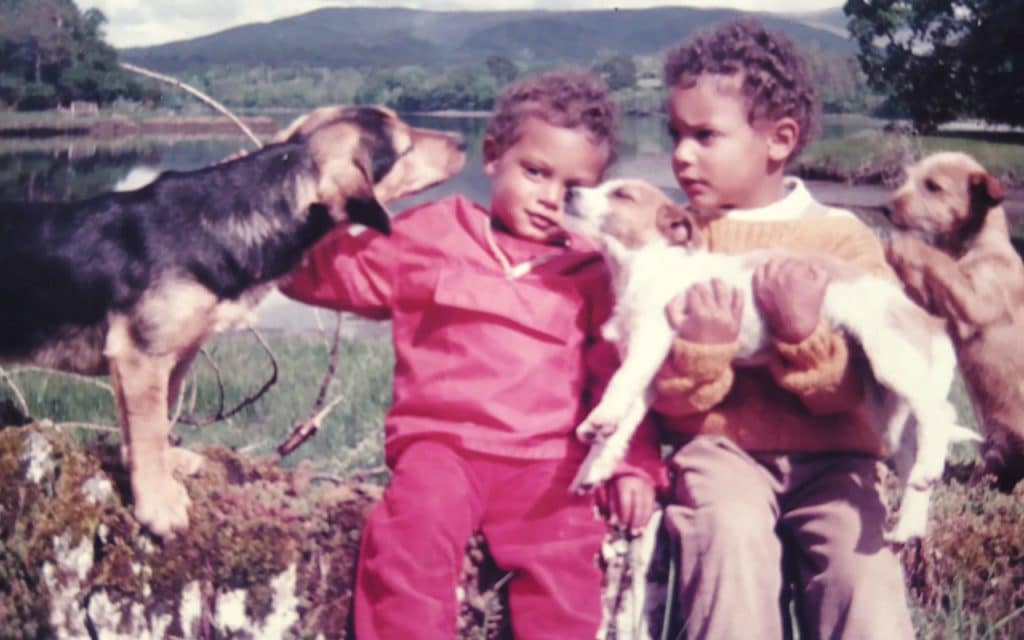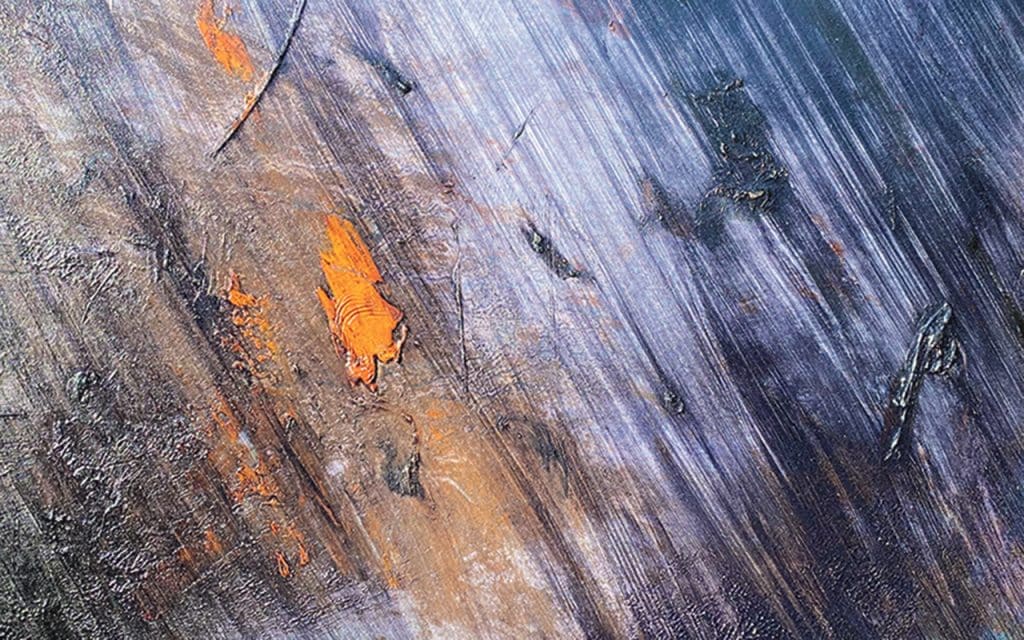In the eighties and nineties word spread in rural West Cork about a friendly Dutch doctor who gave time to his patients and even served up apple tart in the waiting room. Not only that, the tiny white pills he prescribed at the end of a session seemed to cure a myriad of ailments. Over 200 years earlier, in the late 18th century, a German physician called Samuel Hahnemann had challenged the conventional rules of medicine by creating an alternative medicine called homeopathy based on the principle that ‘like cures like’. While it has repeatedly come into conflict with modern medicine and is the subject of much debate, homeopathy – which ostensibly uses diluted remedies to stimulate the body’s self-healing abilities – remains one of the most widely used alternative medicines in the world today. Dutch physician, Dr Martin Dekkers, is credited with introducing this non-conventional treatment to West Cork over 40 years ago. Although ten years past retirement age, today Dr Dekkers, 75, still practices near his home between Skibbereen and Drimoleague. Chatting to Mary O’Brien, he shares why he made the move from allopathic medicine to a more holistic approach in treating patients.

“As a medical doctor, after a while I simply started wondering if I was promoting health or just sticking a thumb in a dike,” explains Martin, who was drawn to the idea of an alternative to prescribing pharmaceutical medication, a more holistic approach that would look at a patient’s overall health and wellbeing.
Martin started his professional life working in conventional medicine. While studying in Holland, he fell in love with a psychology student from the West indies and, after completing his final exams, followed her to an island in the Caribbean where he got a job as a locum with the resident GP. While his interest was in general practice, with a shortage of medical specialists on the small island, Martin was talked into practicing ambulatory psychiatry, part of which involved administering an aversion therapy programme for addiction. Thrown in at the deep end, the young doctor learned a lot, expanding not only upon his medical knowledge and skills but also on patient care.
While life on the island was comfortable, Martin and Cita, who were both interested in living a self-sufficient lifestyle, started thinking about spreading their wings. They investigated climates less desert-like and more suitable to growing food, travelling to places like Columbia, Venezuela and France. Then a friend convinced them to check out Ireland so they rented a VW Beetle and drove from Connemara down to Kerry. “We were baffled by the friendliness of the people,” says Martin laughing. “We couldn’t figure out the A and B system in the old phone boxes and why perfect strangers would stop at the side of the road to help us book our flights.”
Attracted by the lush green landscape and and the blue-green hues of the sea – it’s vibrant colour reminiscent of the Caribbean – and not least the people, Martin and Cita decided to put down roots and bought an old farmhouse that needed work in Kealkil.
A year later, the mixed-race couple returned to Ireland with enough savings to start renovations on their new home.
Everyone knew everyone and everyone’s business in the Ireland of that time. “The local Garda knocked on our door soon after we arrived and asked to see proof of our savings,” shares Martin.
“We felt very welcome,” he adds. “The neighbours helped us to make jam, that kind of thing. We did find out later that we were known as ‘Black and Dekker’ in Bantry but it was said in an affectionate and funny way, so we didn’t take offence. I think people thought we were exotic and were more flattered than anything else that we wanted to live in West Cork.”
While working on the house, Martin volunteered at Bantry Hospital. “Just to keep my foot in and improve my medical English,” he says. It was during this time that his interest in holistic medicine was piqued, after a young Indian nun, also a doctor, gave him the loan of a book on naturopathy. “Homeopathy is very commonly practiced by medics in India,” says Martin.
“I think I was always a bit alternative,” he admits. While he performed well in college, Martin still found time to join the protests of the day. He regularly attended peace rallies and demonstrations against the Vietnam War, and was also part of a movement, sometimes called the “university revolt”, which included occupations of university buildings and demands for greater student and faculty representation in university affairs. “We felt that society wasn’t fair and it was time for change,” he shares.
Back to the future and while renovations on the house were complete, money was running out, so Martin decided to set up a medical practice at their home. With the living room doubling as the waiting area, apple tart served to waiting patients, and sessions typically lasting more than an hour, this was no ordinary GP practice. “I wanted to give patients time, look at the whole person, what they ate, their sleep habits, medical history, their parent’s medical history and so on,” shares Martin.
“People soon began to treat it like entertainment, a day out, staying for the afternoon to chat,” he adds.
By their second winter in West Cork, the couple were out of money and surviving on very little. They kept a goat, which they made cheese from and grew their own vegetables. Dreaming about starting a family, they set a goal of 10 patients to place themselves in a more financially stable position to have a child.
After the birth of their son, with their family and the practice expanding, Martin and Cita sold the farmhouse and bought a three-acre site between Drimoleague and Skibbereen where they built a timber frame house with a consulting room.
It was around this time that Martin started seriously looking into homeopathy. He enrolled in a course at the Faculty of Homeopathy in London and was accepted as a member after completing his exams two years later.
“I was a bit nervous at the beginning,” shares Martin. “I thought the course would be full of hippies but there were plenty of serious English GPs there, the pipe and tweed jacket type!”

Life became very busy – the practice was growing and so was their family. The couple welcomed their second son in an unexpected home birth. “We were booked in with an obstetrician but when I found Cita she was too far progressed to travel so we had to get on with it,” he says “I had given her a homeopathic remedy to soften the cervix, but I had no idea it would work so well,” he adds. The baby was born within an hour of Cita’s waters breaking without any complications.
By now Martin was practicing acupuncture, after setting up a training course in Cork, for which he flew in a teacher from London. He later travelled to Sri Lanka to train with the recognised healer and author, Professor Anton Jayasuriya who, over 40 years, treated more than 2.5 million patients free of charge and trained more than 40,000 doctors in complementary medicines.
“People want to be better fast,” says Martin. “Pharmaceutical drugs of course work quickly, an aspirin works within half an hour, but then the pain comes back again four hours later. Then the doctor typically ups the dosage and eventually you’ll be sent to a specialist. But by then you’re a chronic patient.
“With these sorts of expectations, I felt I had to impress people a little bit, especially if they were travelling a distance to see me” he explains. “A homeopathic remedy can sometimes take a while to work so I’d stick a needle in a sore spot to give immediate relief and then the remedy would work over time for a more long-lasting effect.
“There is a lot more to acupuncture than this of course,” he adds.
Martin uses the complementary therapy, kinesiology, to identify the right remedy for his patients. Kinesiology uses muscle testing to identify and address imbalances in the body’s energy systems.
“I get the patient to hold the remedy and, if the remedy doesn’t suit them, then the hand comes down easily,” he explains.
He admits to being skeptical of the practice himself at the beginning. “I had to experience it to believe it,” he shares. “My wife brought me to a kinesiologist she was doing a course with and I witnessed a farmer suffering from severe arthritis being diagnosed with a milk allergy. As part of the demonstration, the kinesiologist had the farmer hold a bottle of milk in his hand and when tested for muscle strength, the farmer’s arm weakened – an indicator of a negative reaction.
“The result was the same when my wife held the farmer’s hand while the farmer held the milk – her arm also weakened. I was still skeptical so he had me hold my wife’s hand, she held the farmer’s, and the farmer held the milk. This time, despite trying to resist, my arm weakened.”
The experience convinced Martin that kinesiology could not only detect harmful substances but might also help identify beneficial ones.
“People will call homeopathy and other complementary therapies ridiculous, particularly doctors,” says Martin “but most non-believers have never even tried homeopathy or really looked into the process.”
Homeopathic remedies are made by diluting a substance in water or alcohol (potentiation) and then vigorously shaking the mixture (succussion). This process is repeated many times and it’s believed that the more diluted a substance is, the more potent it becomes.
Homeopaths work not only on the symptoms but also on the emotions, treating the entire person.
“I’ve prescribed plenty of drugs…antibiotics, anti-psychotic medication, benzodiazepines you name it, in my day, and I would never deny anyone the medication that they need, but people just naturally started coming to me specifically for homeopathy and acupuncture because of the results,” says Martin.
“The bane of every homeopath’s life is finding the right remedy, but when you do find the right one, the results can be amazing.
“I’ve seen people walk on badly swollen ankles, that I would have given three weeks to heal, just a few hours after taking ‘Arnica’.
“Just a few days ago I stepped on a piece of broken glass, so I took a remedy called ‘Staphysargia’ for healing wounds and cuts, and the pain went after 20 minutes.
According to Martin, children in particular respond very well to homeopathy. “Over the years, I’ve treated a lot of immune-compromised children with recurring infections, as well as eczema, asthma and so on, and most do quite well, better than on repeated antibiotics, steroids and trips to the hospital certainly.”
Today, while he’d like to give more time to creative pursuits like working with paint and clay, talents that have emerged in later years, there is no sign of him giving up work, which he confesses to having a love-hate relationship with. “Listening to peoples woes is no fun, but if you can do something to help them, it can be very gratifying,” he explains.
Martin was in his forties when he and his wife separated (they’re still good friends) and, while there have been a few serious relationships since, being alone is something he has come to accept. What he is finding hard to accept is growing old. “It’s no joke,” he says. “I can live with the idea of being finite but it’s the process of getting there that I find difficult. As a doctor I suppose I’m more aware of how dependant we get on others as we age and I find that daunting.”
But if it comes to it, there is even a little white pill for old age. “Baryta Carbonica is a classical homeopathic remedy for the symptoms of aging like forgetfulness,” he shares.



